

William Stopford
2025 Chevrolet Corvette Z06 review
2 Months Ago
The Mazda MX-5 is the best selling roadster of all time, but it doesn't need a soft top or a manual transmission to make sense.

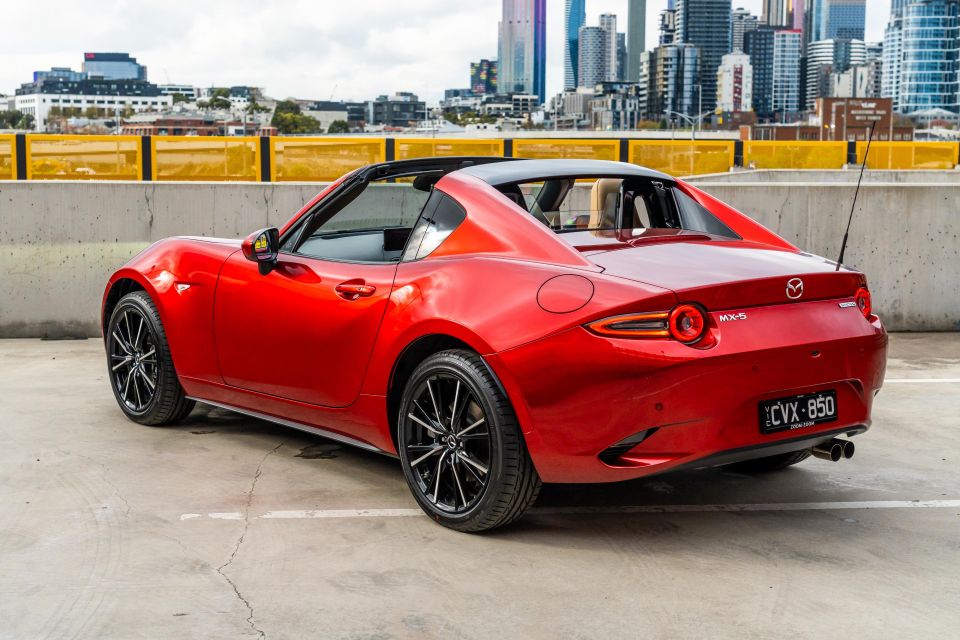

Quickly see how this car stacks up against its competition. Select any benchmark to see more details.
Where expert car reviews meet expert car buying – CarExpert gives you trusted advice, personalised service and real savings on your next new car.
It’s been a case of evolution rather than revolution since the ND-generation Mazda MX-5 hit showrooms back in 2015, and it’s not like many people are complaining.

Mazda’s compact, lightweight, no-frills sports car is the best selling roadster of all time, and the current fourth-generation car is widely considered a return to form after the NB and NC generations took a slight departure from the MX-5 ethos.
Here we have the ND3, the third revision of the current formula. It’s unlikely to make too many headlines, although the variant on test here could well spark some debate.
Instead of a do-it-yourself soft top and manual gearbox, the RF GT Black Roof comes with a powered targa top and an automatic transmission.
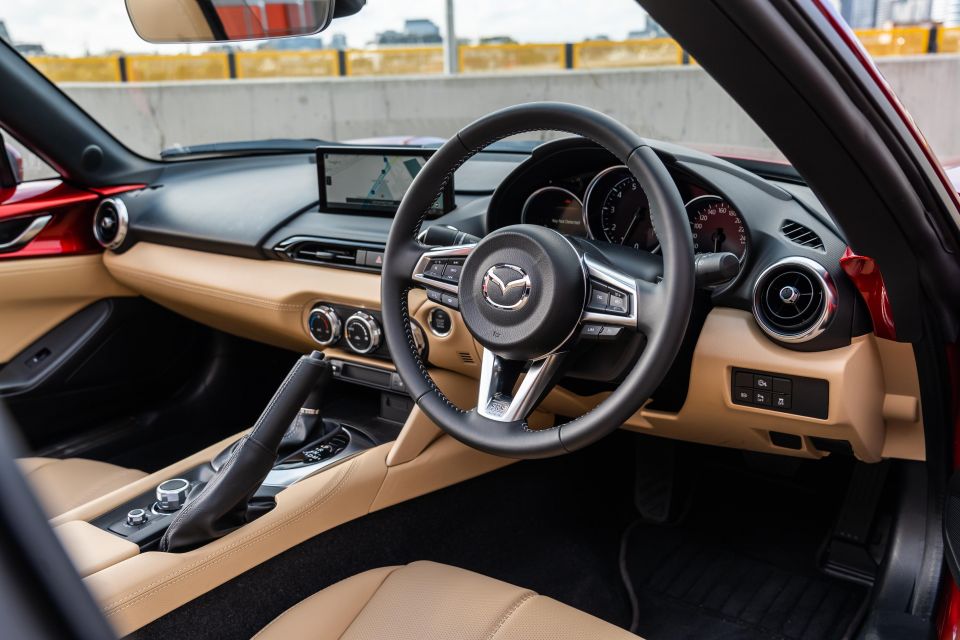
Surely that means more weight, less open air fun, and diminished driving engagement, right? It costs more than most of the range, too.
But perhaps there’s something to be said for an MX-5 with a little less compromise.
Pricing for the facelifted MX-5 is up by around $2000-$2500 compared to the outgoing range, and already has been subjected to minor price increases since the original announcement (by about $150).
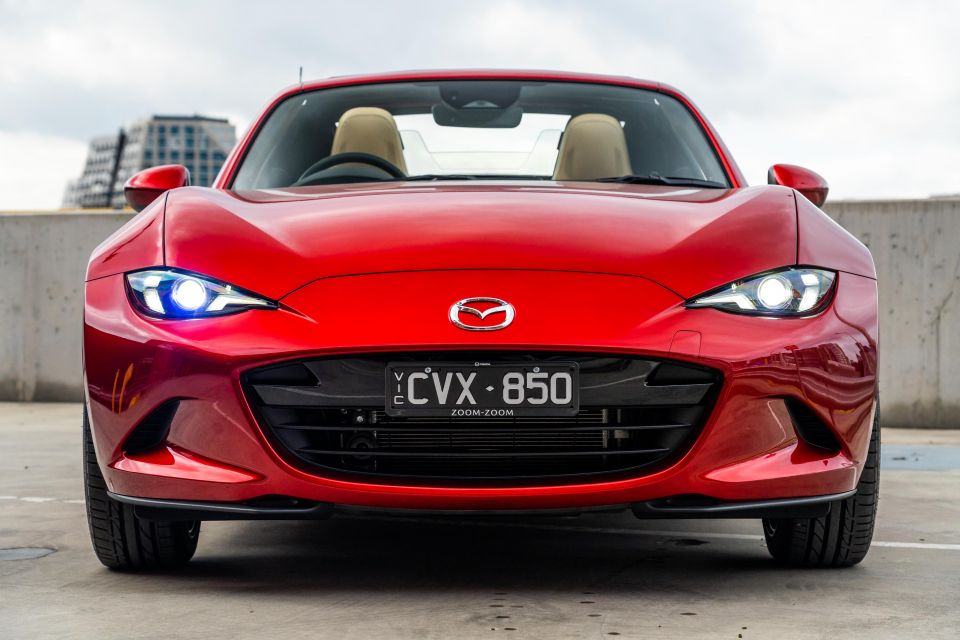
MX-5 Roadster
| Model | Price before on-roads |
|---|---|
| 2024 Mazda MX-5 G20 Roadster 6MT | $41,520 |
| 2024 Mazda MX-5 G20 Roadster GT 6MT | $48,640 |
| 2024 Mazda MX-5 G20 Roadster GT 6AT | $50,140 |
| 2024 Mazda MX-5 G20 Roadster GT RS 6MT | $51,640 |
MX-5 RF
| Model | Price before on-roads |
|---|---|
| 2024 Mazda MX-5 G20 RF 6MT | $46,250 |
| 2024 Mazda MX-5 G20 RF GT 6MT | $53,140 |
| 2024 Mazda MX-5 G20 RF GT 6AT | $54,640 |
| 2024 Mazda MX-5 G20 RF GT Black Roof 6AT | $55,660 |
| 2024 Mazda MX-5 G20 RD GT RS 6MT | $56,140 |
To see how the Mazda MX-5 lines up against the competition, check out our comparison tool.
Buy your new car without the stress. It's fast, simple and completely free.

Great service from Travis and team, second time I have used this business would not hesitate to recommend them to anyone
Craig C.
Purchased a Ford Ranger in Sunshine Coast, QLD
CarExpert helped Craig save $7,224 on his Ford Ranger, now let us save you on your next new car.
Get your BEST priceThere’s only so much you can say about the interior of the MX-5, because there’s not much of it.
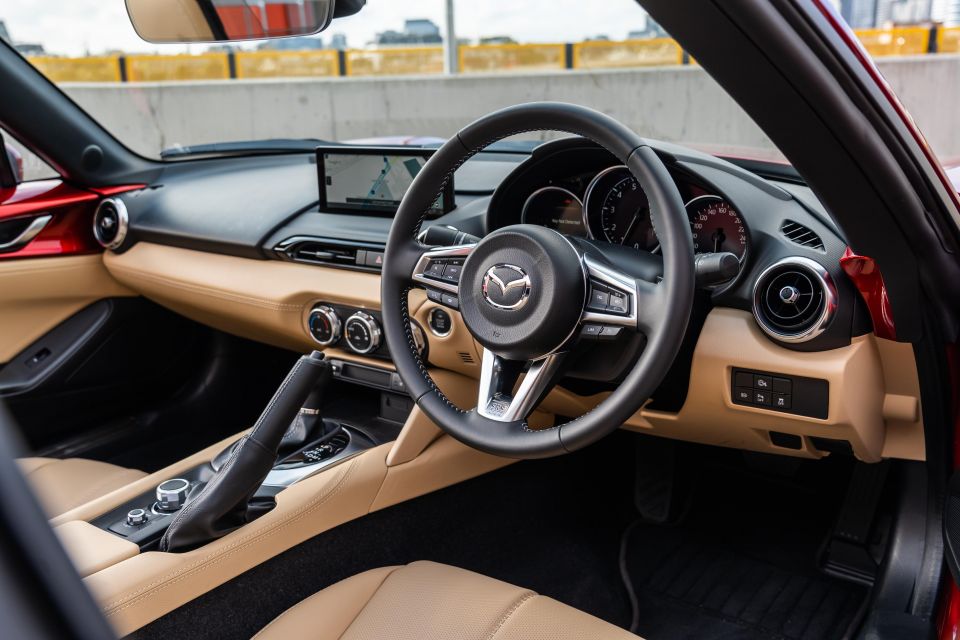
With that said, it’s a lovely space to spend some time in provided you can get in… and that you fit.
Ingress is challenging – finding a technique that minimises damage and discomfort takes practice. I found it easiest to drop at the knees and swivel in slowly.
The tiny dimensions of the MX-5 have always posed issues for taller drivers and that’s no different here, but I’d wager that anyone south of 6’4 and 100kg should be able to get comfortable.
Standing 6’1 myself, I was pleasantly surprised by the amount of legroom available and the steering wheel cleared my knees. If you don’t find that to be the case, the steering wheel tilts and telescopes.
Headroom wasn’t an issue for me either, and several journeys were completed with the roof up.
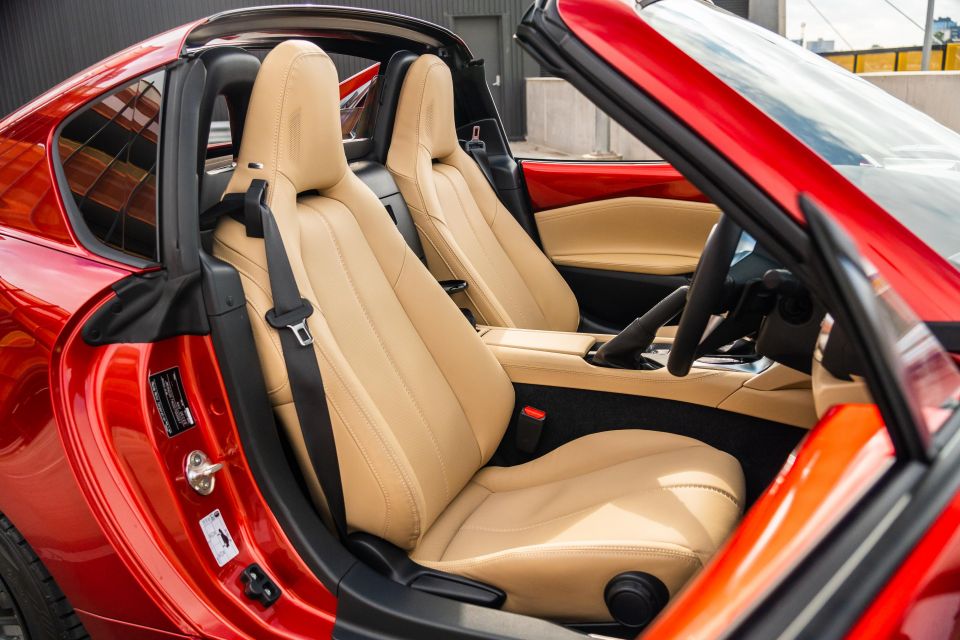
It’s definitely a case of try before you buy, though. The packaging of the MX-5 doesn’t cater so well to passengers, who get the raw end of the deal from a knee- and legroom standpoint due to the packaging of the footwell.
Kids and shorter adults needn’t worry, but it’s hard to imagine tall passengers wanting to spend too much time there. Then again, they just ruin your centre of gravity anyway.
Regardless of which side you end up occupying, the seats themselves are sporty and accomodating to a range of body types.
Trimmed in classy tan leather as tested, they look and feel the part, with plenty of lateral support to keep you in place during spirited driving.
Both seats are manually adjustable via traditional handles and dials, with slide, recline, and height settings.
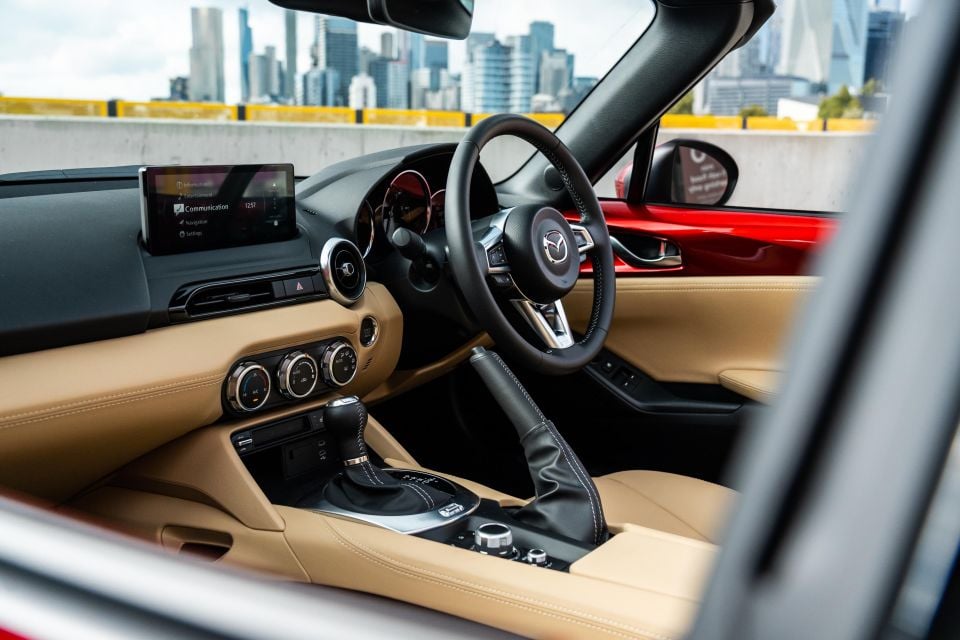
A decent range of movement is available, but I’d love the seats to drop a little lower for an even more connected drive. Three-stage seat heating is one of the main drawcards of GT-specification variants.
Once settled it’s hard to not feel cocooned in the cabin of the MX-5, which is accentuated by the roof design in the RF.
Material feel will also exceed the expectations of those who can’t wrap their head around an affordable sports car having a nice interior.
I’m obsessed with the body coloured trim on the top of each door, and the tan interior option brings the inside of the MX-5 alive harking back to the glory days of British roadsters.
It’s a shame it’s only available for this variant. I reckon there’d be plenty of manual and soft top buyers who would jump at the option.
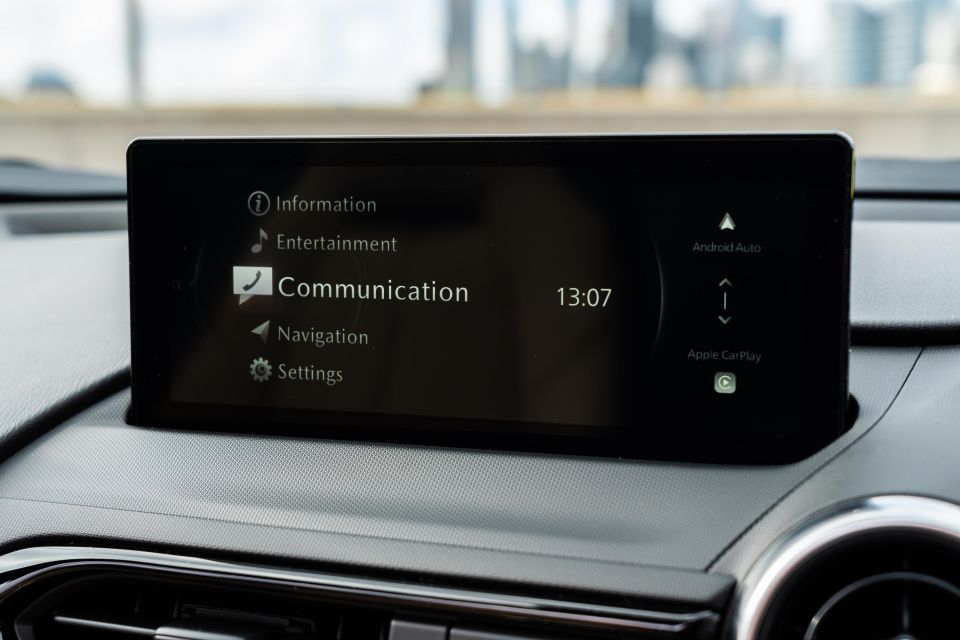
As well as brightening up the space, the lighter shade shows off the soft leather on the seats and door cards, and gives the leatherette surfaces a bit of extra flavour. However, wear and tear will likely be more visible over the long term.
Although you don’t get to play with a manual shifter in this automatic model, the steering wheel is thin and grippy, with tactile paddles mounted to the wheel.
Aside from the fresh colour palette most of these features will be familiar to MX-5 aficionados, but there’s some new technology on offer with the 2024 update.
It comes in the form of a 10.25-inch Mazda Connect infotainment system that debuted on the Mazda 3, but here it houses Mazda Connected Services for the first time in Australia.
Complimentary for three years after the vehicle’s first date of registration, connected services allow net-based and remote features accessible via the MyMazda smartphone app.
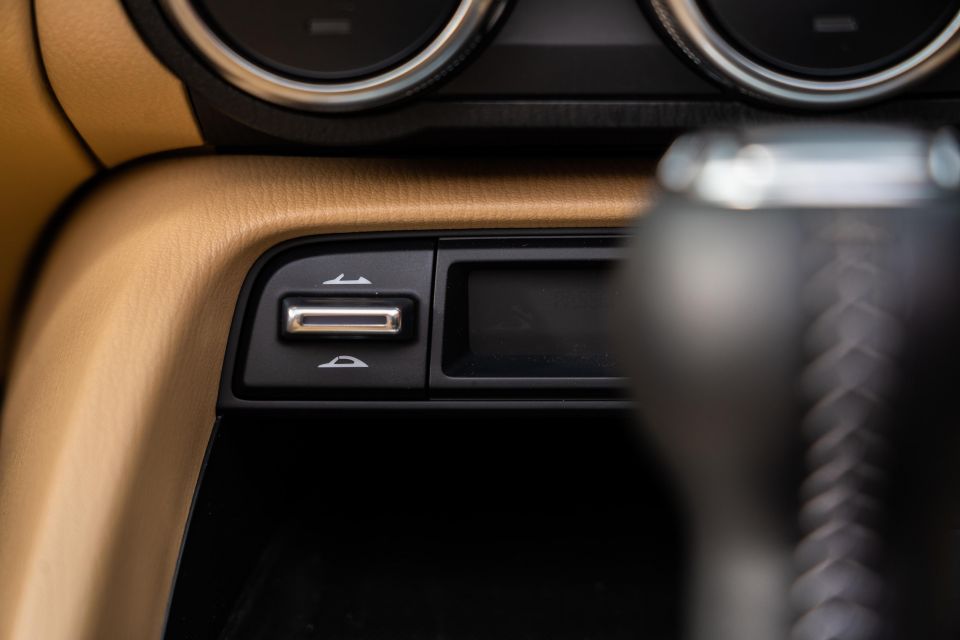
Highlights include vehicle status and health; stolen vehicle assistance; remote lock, flash lights; vehicle locator; curfew notification; geofencing; SOS emergency call; recall notification; and Mazda eCare.
The infotainment screen itself is sleeker in design, bigger, cleaner, and faster than the old system, bringing the MX-5 in line with other modern sports cars.
Mazda has added the ability to use the touchscreen on the move, which was a source of frustration in pre-update models. You can also make selections with a small rotary dial located on the central tunnel.
All the functions within the system are easy to access, although I nearly exclusively used wireless smartphone mirroring for navigation and audio.
GT variants get an upgraded nine-speaker Bose sound system – perfect for blasting your favourites tunes with the roof down.
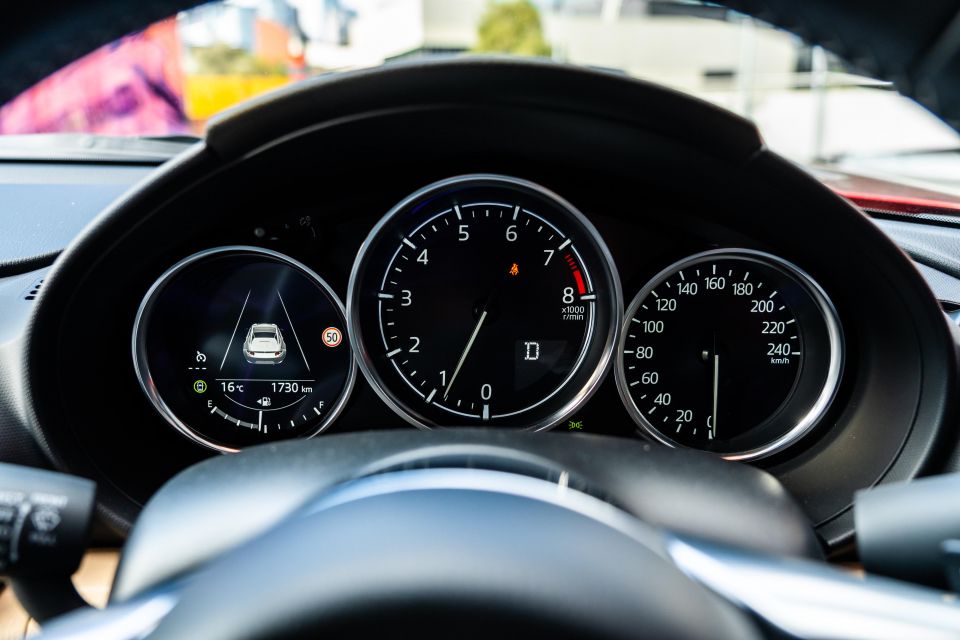
It takes 13 seconds to drop the top in the RF, and the car must be travelling below 10km/h. You have to hold the toggle throughout, and there’s a helpful animation in the instrument cluster to show your progress, paired with a beep to signal completion.
The cluster also contains traditional analogue gauges, and rotary climate dials have been retained for simplicity.
Connectivity is covered by two USB-C outlets located under the centre stack. Bring a cable, as there’s no wireless charger.
That brings us to storage…
All jokes aside, you don’t buy an MX-5 to take it to Costco but there’s still a dearth of storage here compared to other cars in the segment.
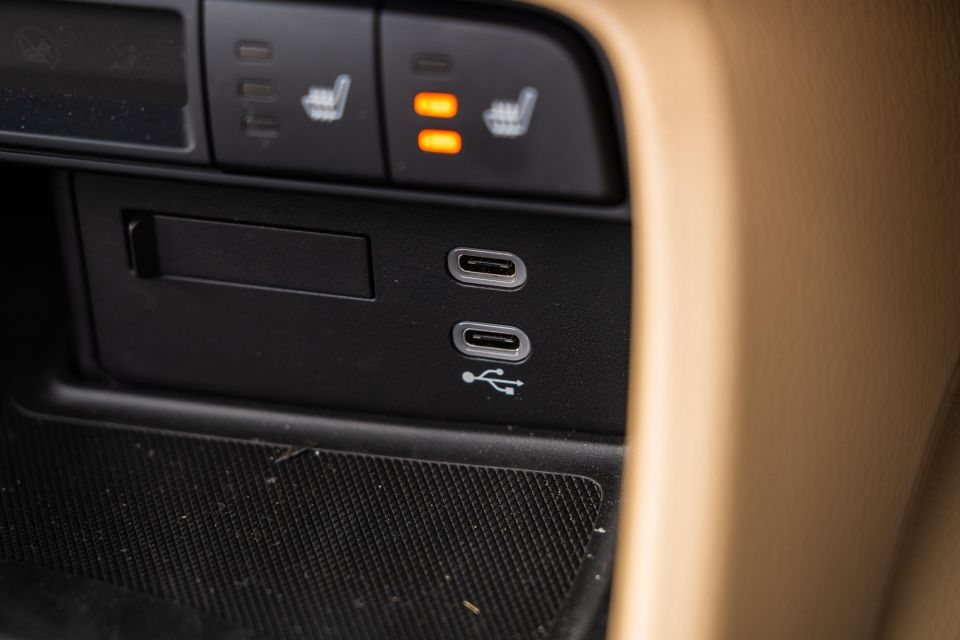
Let’s start with what it doesn’t have. You won’t find a glovebox, door bins, or a centre armrest bin. Cards and keys can be stored in a shallow central cubby, and there’s an undersized tray intended for a smartphone wedged behind the shifter.
Owners manuals and larger items fit snuggly in a lockable storage compartment between the seat backs, which is probably the most usable cabin storage space.
A trademark of the fourth generation MX-5 is its removable plastic cupholders. By default they’re tough to reach, positioned awkwardly between the seat backs. It’s a minor inconvenience in automatic cars, and a real headache in manual examples where the driver needs room to row through the gears.
The passenger cupholder can be shifted to a slot next to their right knee, but there’s no alternative for the driver. I miss the door mounted cupholders from the NC-generation cars.
Boot space isn’t a strong suit either, but we already knew that. You get 127L of claimed cargo space, which doesn’t promise much.
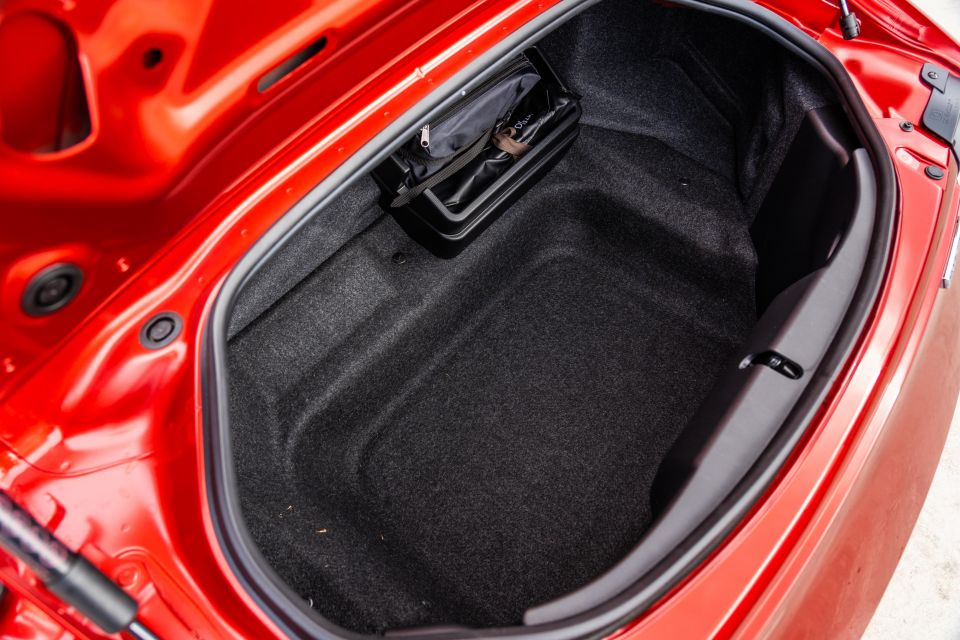
However, the boot exceeded my expectations. I loaded it up with four soft bags for a weekend away and had some room to spare, just don’t travel with hard suitcases or golf clubs.
There’s no denying that the Subaru BRZ/Toyota GR86 are more practical sports cars though. Subaru claims 201L for the BRZ, while the Toyota offers 237L. Both have rear seats that fold down, unlocking extra storage capacity.
| Dimensions | MX-5 Roadster | MX-5 RF |
|---|---|---|
| Length | 3915mm | 3915mm |
| Width | 1735mm | 1735mm |
| Height | 1230mm | 1230mm |
| Track | 1495mm – front 1505mm – rear | 1495mm – front 1505mm – rear |
| Wheelbase | 1505mm | 1505mm |
| Ground clearance | 135mm – with driver (75kg) 150mm – unladen | 135mm – with driver (75kg) 150mm – unladen |
| Cargo volume – VDA | 130 litres | 127 litres |
To see how the Mazda MX-5 lines up against the competition, check out our comparison tool.
Just one engine is offered for the MX-5 in Australia.
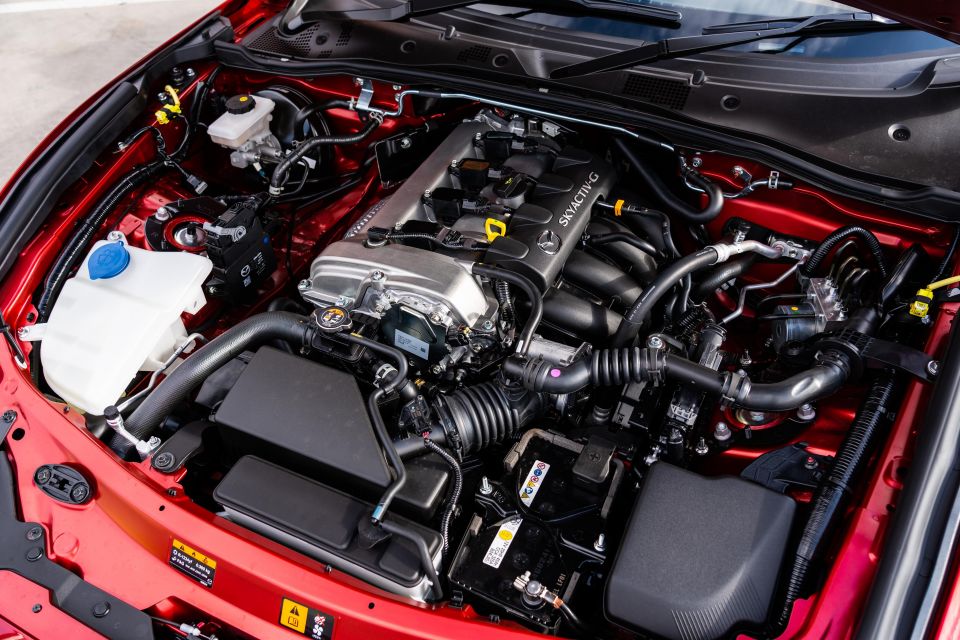
| Specifications | Mazda MX-5 G20 |
|---|---|
| Engine | 2.0L 4cyl petrol |
| Power | 135kW @ 7000rpm |
| Torque | 205Nm @ 4000rpm |
| Transmission | 6-speed manual 6-speed automatic (GT) |
| Driven wheels | Rear-wheel drive |
| Kerb weight | 1063-1070kg – Roadster 6MT 1108-1115kg – RF 6MT |
| Fuel consumption – claimed | 6.8-7.0L/100km – Roadster 6MT 6.9-7.2L/100km – RF |
| Fuel consumption – as tested | 7.1L/100km – Roadster GT RS |
| Emissions standard | Euro 5 |
| Minimum octane rating | 95 RON |
To see how the Mazda MX-5 lines up against the competition, check out our comparison tool.
The Mazda MX-5 remains an absolute pleasure to drive, no matter the time or place.
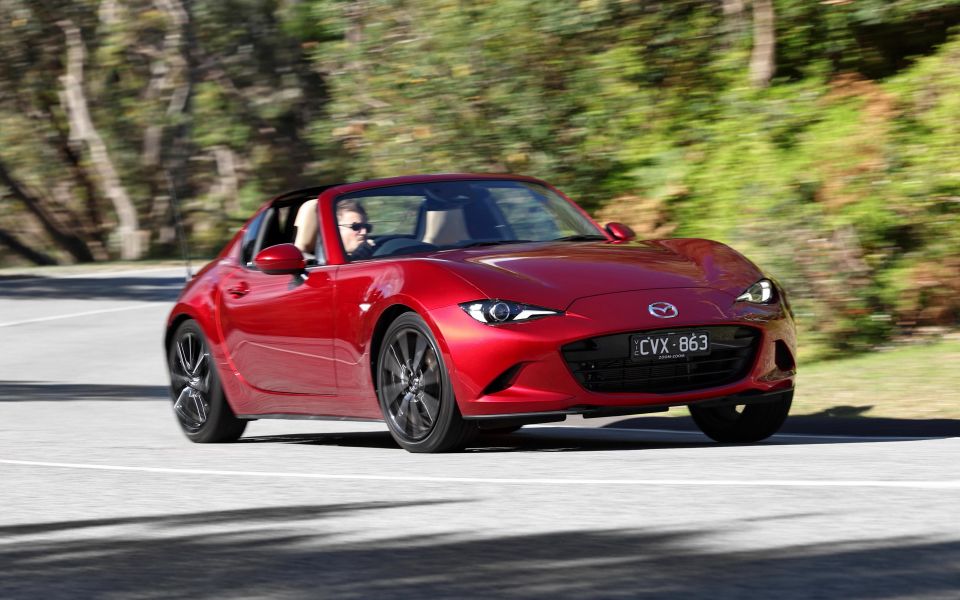
Where expert car reviews meet expert car buying – CarExpert gives you trusted advice, personalised service and real savings on your next new car.
You’d assume a lightweight, open-top sports car is best saved for spirited driving on the weekend. That would be a waste of this car’s talents. Instead, try driving it every single day – I did, and I’ve never had more fun commuting in my life.
For a start, the MX-5 does some of its best work between the speeds of 0-60km/h. Despite producing an unremarkable 135kW and 205Nm from its 2.0-litre four-cylinder engine, this little Mazda gets up and goes from a standstill with a kerb weight of just over 1100kg.
The motor is willing and linear, so you know what you’re going to get when you mash the throttle from a set of traffic lights.
It’s surprisingly satisfying from an aural perspective too, with a manic and buzzy character. Slightly more volume from the exhaust wouldn’t go astray, but it’s loud enough to keep things interesting.
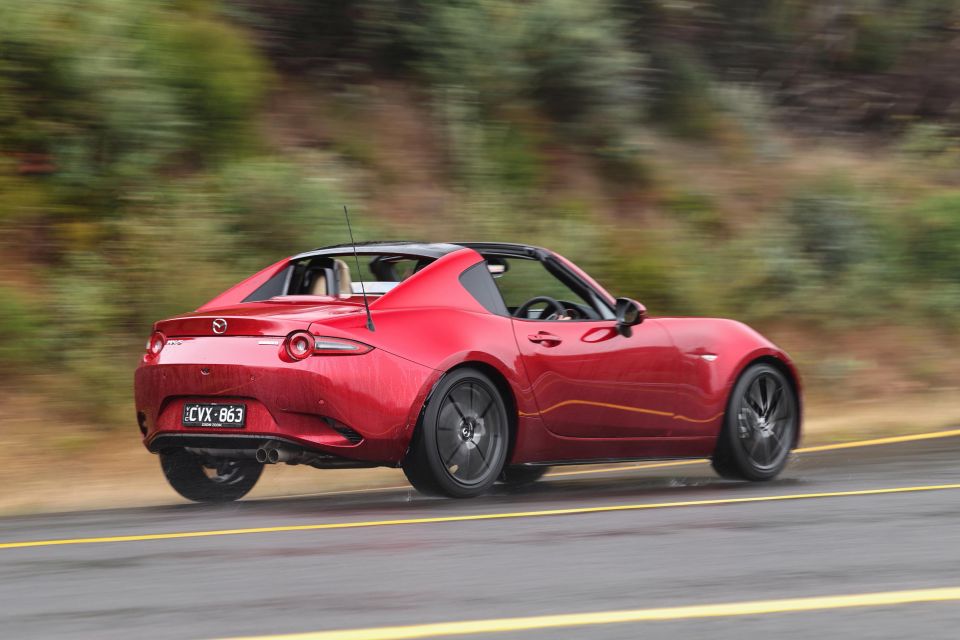
Changing lanes and darting through suburban streets is a blast, as the petite dimensions of the MX-5 give you more room to work with on the road.
All driver controls are responsive and direct, from the throttle and brake pedals to the steering rack. That said, you don’t get much feel through the steering wheel, which dumbs down feedback from the road surface.
That’s a minor blemish though, and there are several other reasons to like what the MX-5 offers in urban environments.
A soft suspension setup from the factory provides a comfortable ride on all road surfaces, with less of the vibration and harshness synonymous with sports car ownership.

Parking is a breeze as this is one of the smallest cars on the road, and a decent reversing camera compensates for the visibility lost to the retractable targa top. The RF also has security advantages, as it can’t be tampered with or broken into in the same way a fabric top can.
On the highway, the active safety systems fitted to the ND3 aren’t intrusive, so you won’t be trapped in a symphony of beeps and bongs. Road and wind noise are also limited by the solid metal roof. As a result, it’s easy to hold a conversation without raising your voice, or listen to the stereo in peace.
That’s not to say the roof needs to stay on. With the windows up an open-top highway run is more than bearable in the cabin. One disappointing omission is adaptive cruise control, which would complement an already well-rounded package.
That inconvenience is offset by the automatic transmission fitted to this variant. It mightn’t necessarily match the ethos of the MX-5, but bumper-to-bumper peak-hour traffic can become tiresome with a clutch and shifter, so the option to let the car choose gears for you comes in handy.
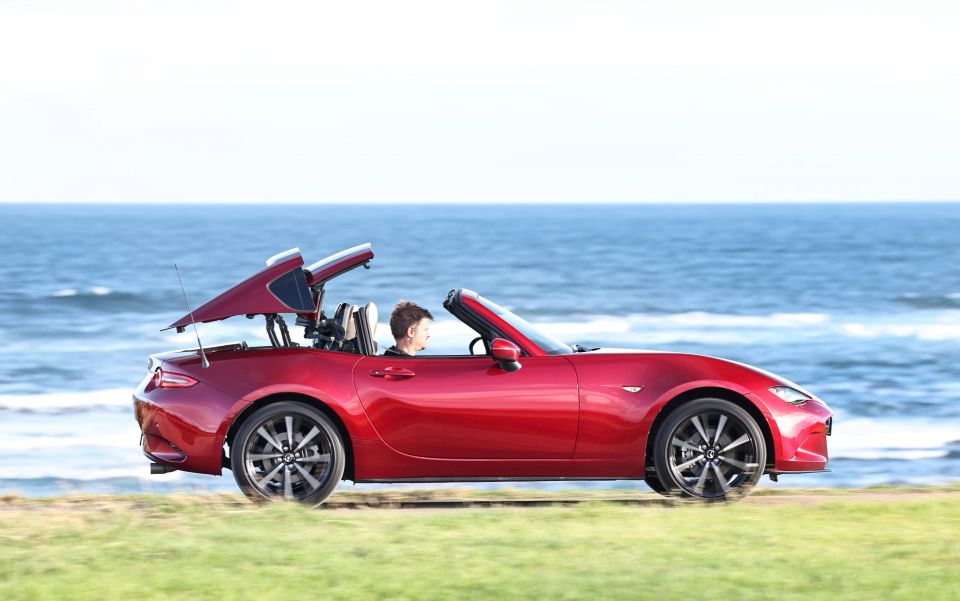
All the above elements make for a comfortable, entertaining city car, but how does it perform once you cross the edge of town? That’s where it truly shines.
I chose the Great Ocean Road in Victoria to stretch the legs of our MX-5, and I’m so glad that I did.
The mix of long curving bends and tight hairpin corners is exhilarating to experience from such a low driving position with the roof folded away. It’s not quite the open-air freedom of a rag-top, but it’s close enough.
You’re never worried about breaking the speed limit and it’s very difficult to unsettle the MX-5 at road legal speeds – the combination of a tight chassis, sticky tyres, and sensible outputs keep it neutral through most corners, while there’s plenty of body roll when you push a little harder.
Those handling attributes fit perfectly with the fun, not-so-serious personality this car exudes. It’s nearly as much fun to power down a straight piece of coastal road with a heavy right foot and hands gripping the shift paddles.

Purists will say you need to buy the manual, and a large chunk of buyers probably should. But the automatic gearbox tested here doesn’t ruin the car, and the tactile plastic paddles are responsive on both upshifts and downshifts.
I tended to switch between the ‘sport’ and ‘manual’ drive modes in town depending on traffic, before doing all the work myself on rural roads.
While the engine is fit for purpose and revs right out to a 7500rpm redline, it starts to run out of shove at 100km/h compared to the turbocharged hot hatches that have taken over in the last decade – not that road users are permitted to go much faster.
It strikes the right balance for a sporty road car. Most aspects of the MX-5 do, really.
Three distinct trim levels are available with both body styles.
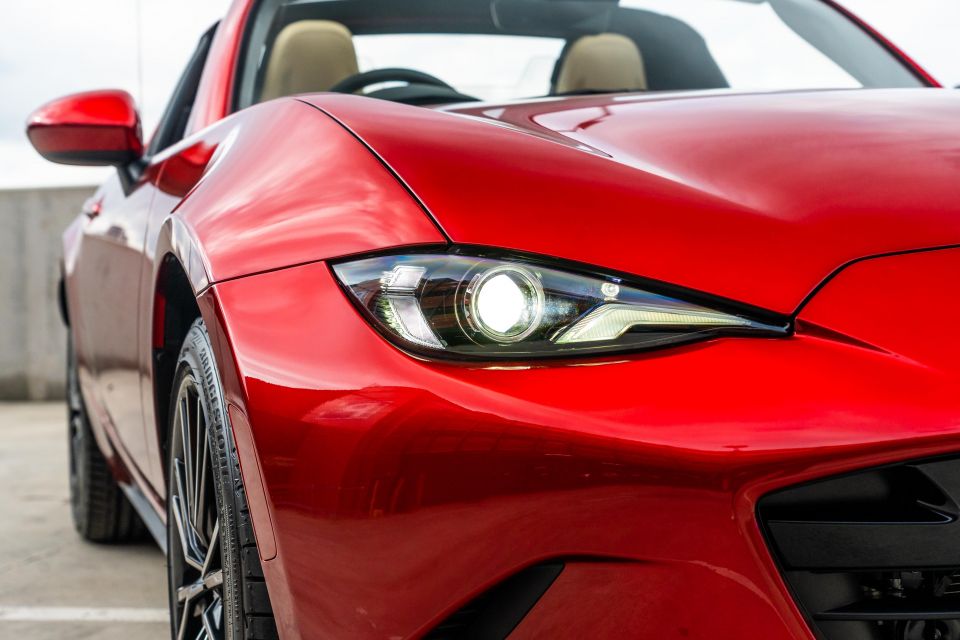
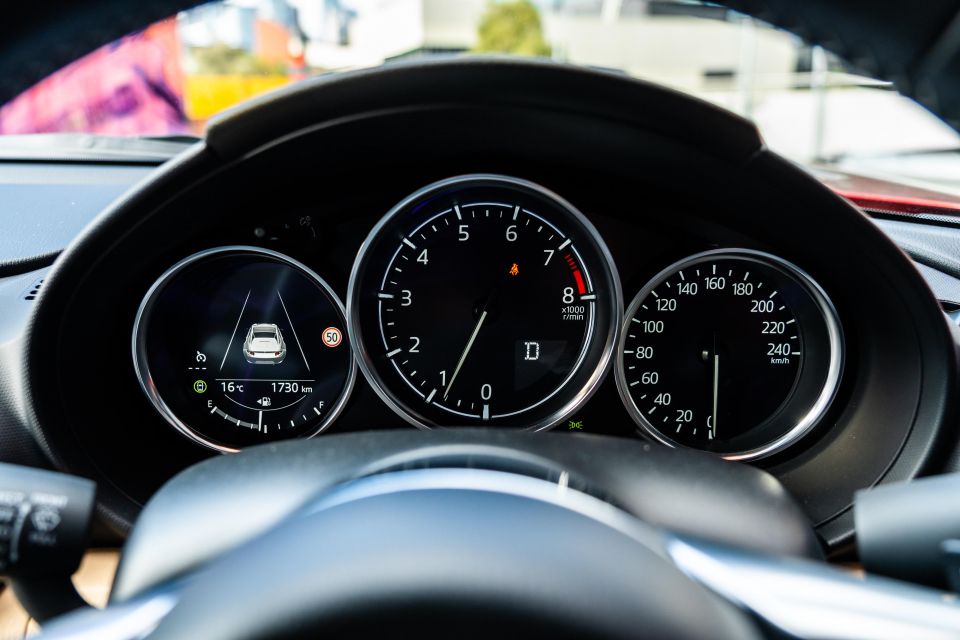
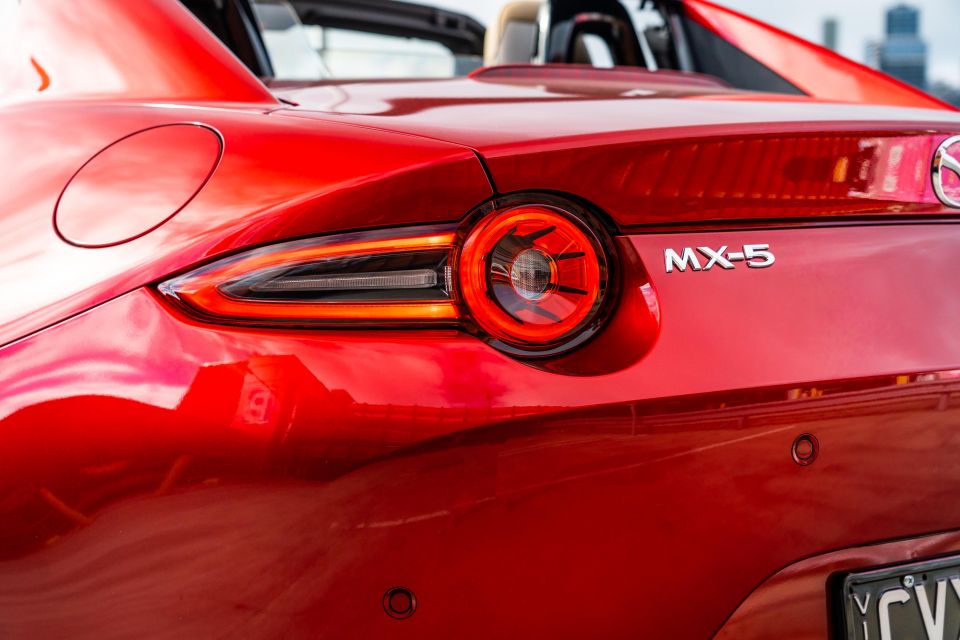

MX-5 standard equipment:
MX-5 GT adds:
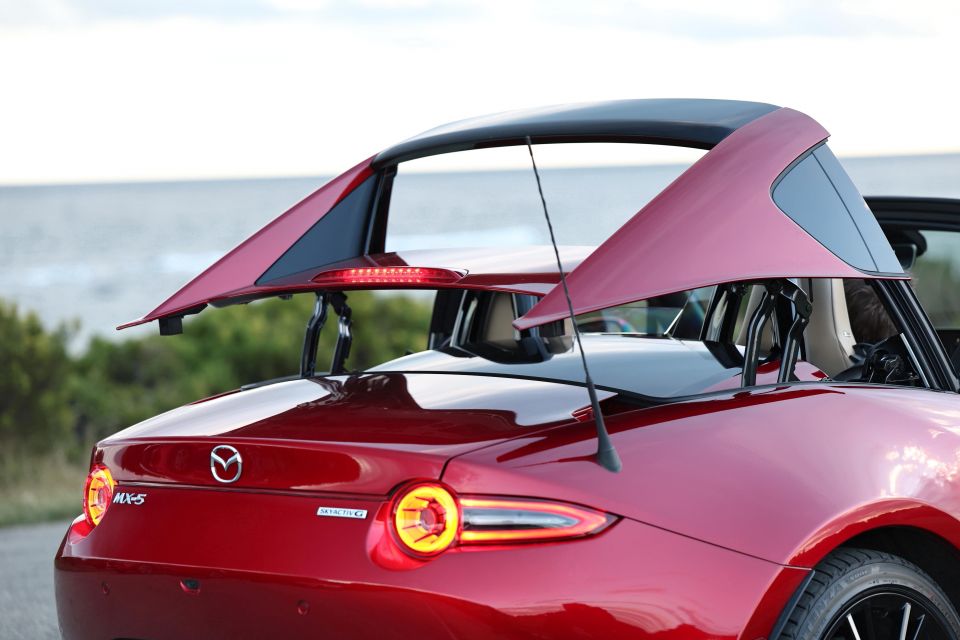
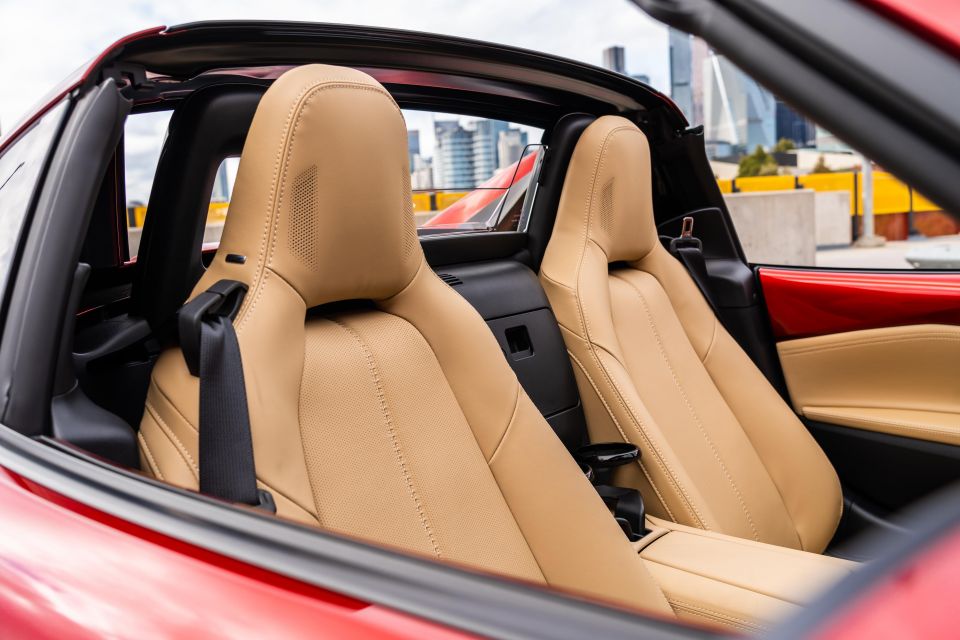
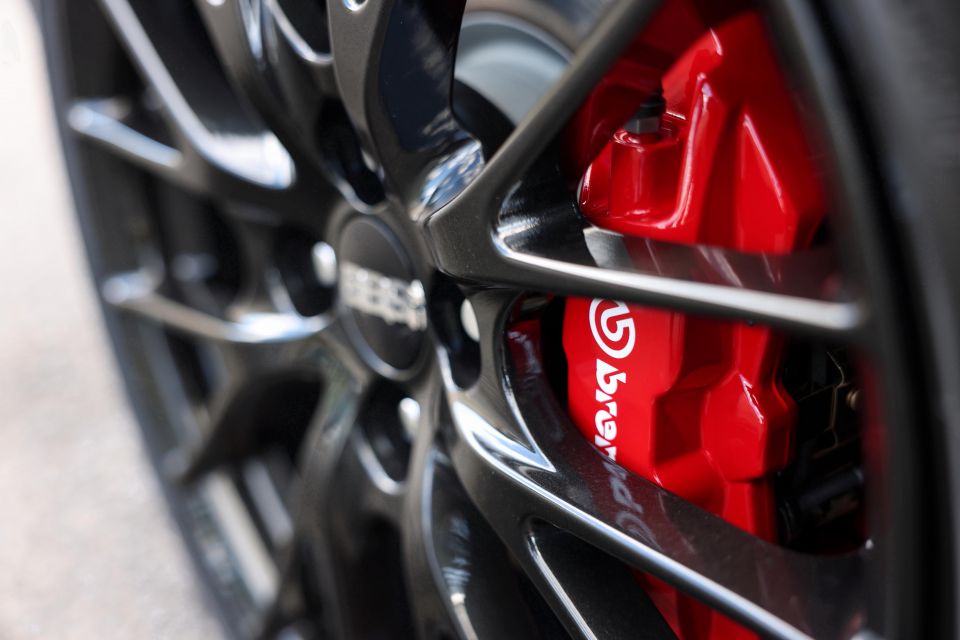
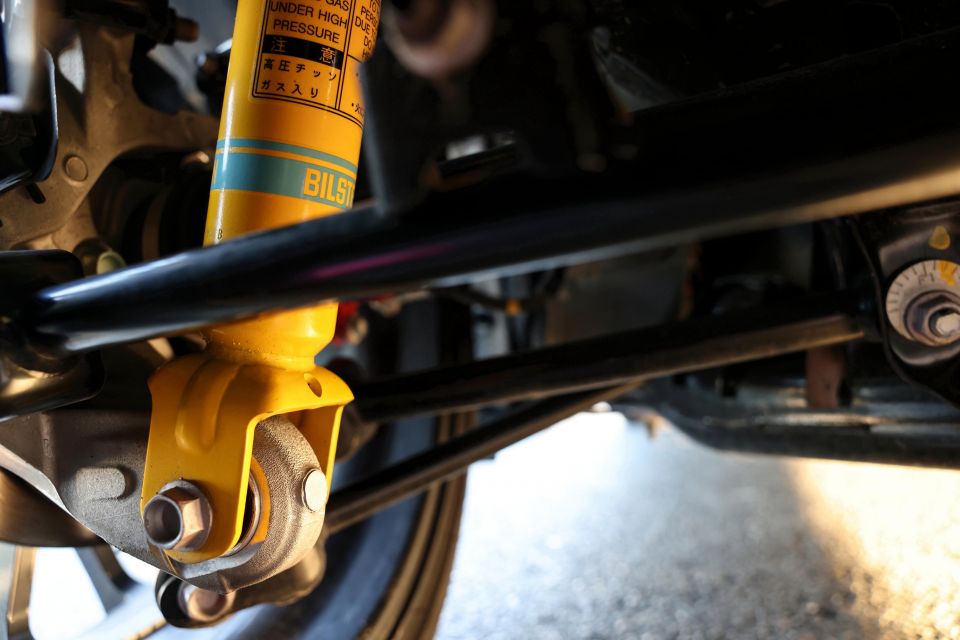
MX-5 RF GT Black Roof adds:
MX-5 GT RS adds (over GT):
The Mazda MX-5 is currently unrated by ANCAP, as the ND-generation’s five-star ANCAP safety rating expired as of 1 January, 2024.
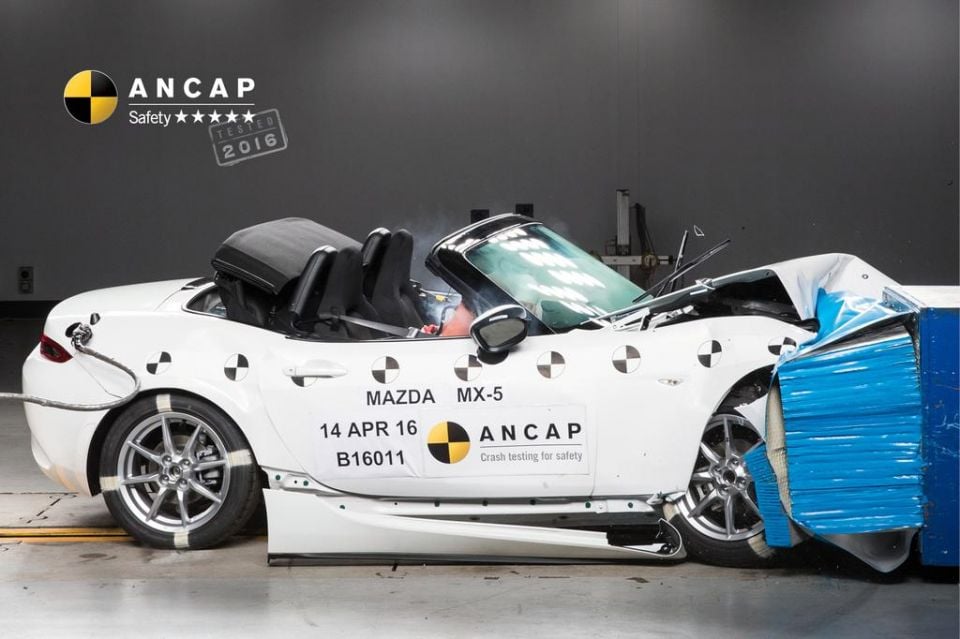
Pre-update models wore a five-star ANCAP safety rating based on 2016 testing, where the Japanese sports car scored 35.20 out of 37 against older criteria.
Standard saefty features include:
The MX-5 is covered by a five-year, unlimited-kilometre warranty, with five years of roadside assistance.
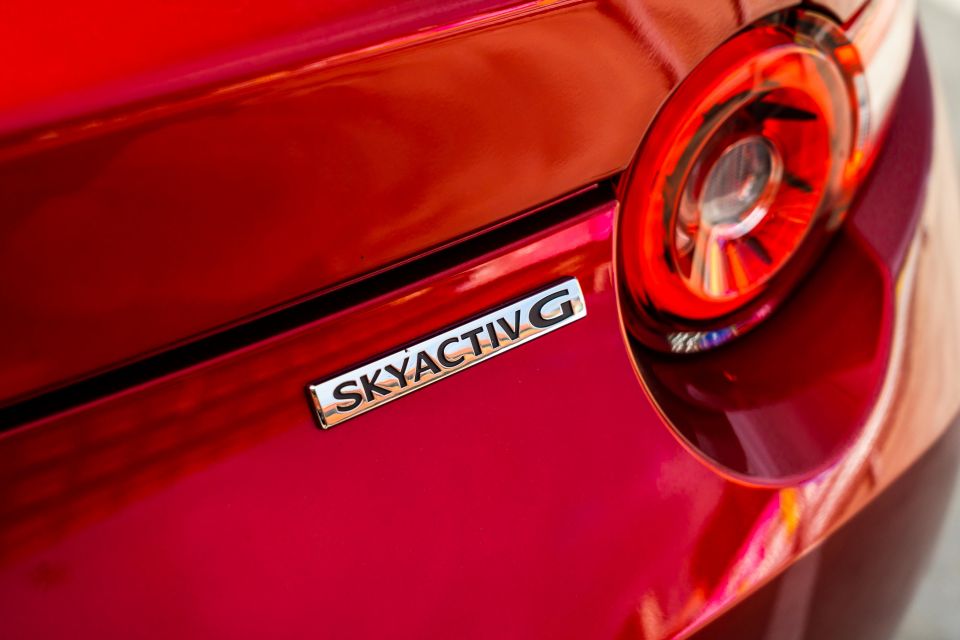
Scheduled maintenance is required every 12 months or 15,000 kilometres – whichever comes first. Mazda offers five years of capped-price servicing.
2024 Mazda MX-5 service pricing:
| Service interval | MX-5 G20 6MT | MX-5 G20 6AT |
|---|---|---|
| 12 months/15,000km | $447 | $447 |
| 24 months/30,000km | $555 | $555 |
| 36 months/45,000km | $530 | $530 |
| 48 months/60,000km | $555 | $555 |
| 60 months/72,000km | $634 | $479 |
| Total | $2721 | $2566 |
Buy your new car without the stress. It's fast, simple and completely free.

Great service from Travis and team, second time I have used this business would not hesitate to recommend them to anyone
Craig C.
Purchased a Ford Ranger in Sunshine Coast, QLD
CarExpert helped Craig save $7,224 on his Ford Ranger, now let us save you on your next new car.
Get your BEST priceThe Mazda MX-5 sits in a league of its own in 2024, without a direct drop-top rival.
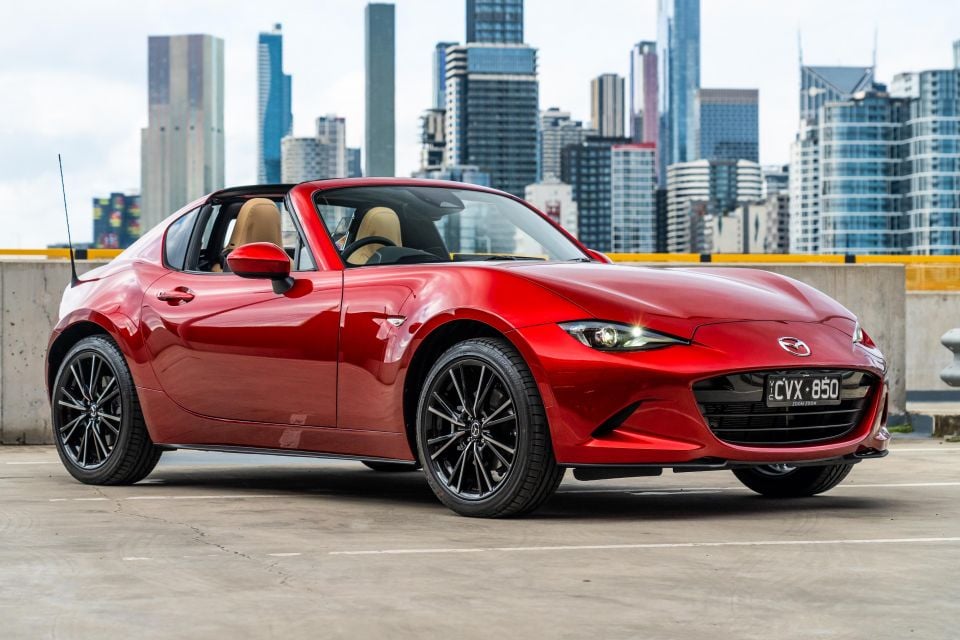
Sure the Toyota GR86/Subaru BRZ qualify as affordable sports cars, but if you want the wind through your hair there’s no substitute for the pint-sized roadster. As such, it comes down to which variant offers the best value, which poses a couple of questions.
Roadster or RF? Sure, the RF is heavier and dearer, but it improves the appearance of the MX-5 while offering security and flexibility a soft top can’t provide. I’d be happy to take the RF on a wet highway run and park it outside, whereas I’d be less comfortable doing so with the Roadster.
That narrows it down to a choice of five RF variants. From that bunch it’s the base manual that makes the most sense. The steep $7000 upgrade from base to GT essentially brings new seats and speakers, neither of which markedly improve the car.

And while the automatic sampled here offers slick shifts and some extra usability on the daily commute, it’s not available with the entry-level RF, so that rules it out even though the tan interior is very desirable.
You know my pick of the range, but any MX-5 variant is bound to bring joy to its owner. With the latest iteration you get a willing naturally aspirated engine, playful handling dynamics, and go-kart feel with low running costs and modern tech to top it off.
Blasting along a fun road with the roof down and revs up is all that’s required to forgive the impracticality inherent in these cars, and I recommend all enthusiasts give an MX-5 a try at some point in their motoring journey.

Click the images for the full gallery
MORE: Buy a Mazda MX-5 MORE: Everything Mazda MX-5
Where expert car reviews meet expert car buying – CarExpert gives you trusted advice, personalised service and real savings on your next new car.
Josh Nevett is an automotive journalist based in Melbourne, Australia. Josh studied journalism at The University of Melbourne and has a passion for performance cars, especially those of the 2000s. Away from the office you will either find him on the cricket field or at the MCG cheering on his beloved Melbourne Demons.


William Stopford
2 Months Ago
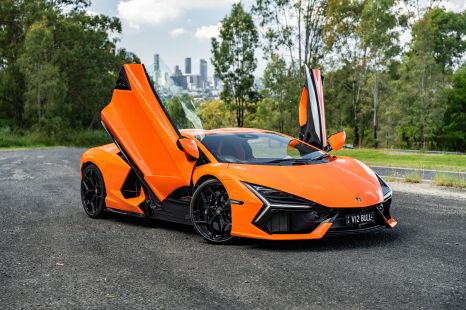

Alborz Fallah
2 Months Ago


James Wong
1 Month Ago


Paul Maric
26 Days Ago


Matt Campbell
17 Days Ago


Damion Smy
10 Days Ago